TV signal amplifier: how it works and how to choose a digital TV signal amplifier
A weak signal from the transmitter causes the reception of television channels to deteriorate in places remote from the television towers. To improve image quality, a television signal amplifier is used - a small-sized device that is installed on the antenna and connected with a cable.
We will talk about how amplifiers work, which criteria for choosing devices are decisive. Here you will learn all about the types of antenna amplifiers, their pros and cons. Based on our recommendations, you can purchase the most suitable model for you.
The content of the article:
Why is the television signal deteriorating
Determining that the signal does not meet the requirements is simple. However, analog and digital television receivers respond differently.
In the first case, gray-white ripples, “snow” appear, the picture is partially distorted or disappears completely. In the second - the image freezes, turns green or “pixel”.
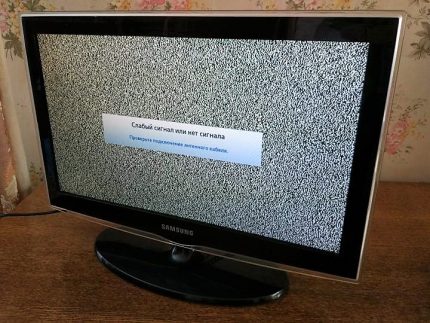
The reasons for the deterioration of the signal are many - from quickly defective defective antennas to the unsuitable state of the cable or connector. There are more serious reasons - for example, too much distance from the transmitter, which even a powerful antenna with an amplifier can not cope with.
The digital signal may disappear in the following cases:
The image and sound quality can be affected not only by the cable, but also by old, oxidized connectors, splitters, connectors - any additional elements, except for the amplifier.
Even with properly selected equipment, noise can occur from all kinds of transmitting devices - modems, radios, repeaters, routers, and even devices that are not equipped with an antenna.
It happens that due to incorrect calculations, an antenna or amplifier with an too high gain is selected, as a result of which the signal is overloaded and adequate data transmission becomes impossible.
Digital TV Signal Amplifier
To eliminate some of the listed reasons, and use a digital TV signal amplifier. It is installed on a remote antenna, next to a room antenna or separately, connecting with a coaxial cable. The type of device is selected depending on specific conditions and requirements.
Purpose and principle of operation
As soon as you find out that it is possible to improve the quality of the transmitted information by equalizing or stabilizing the received signal using an amplifier, it remains to buy a suitable device and install it. This almost always helps if the cable from the roof mounted antenna is too long.
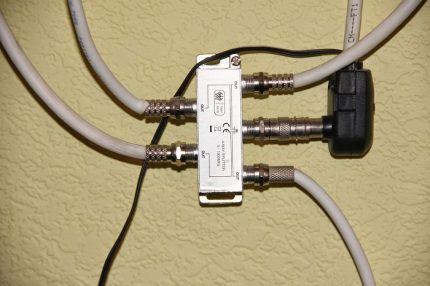
The purpose of the TV signal amplifier, therefore, is to improve data transmission and, as a result, in a clear, blurry picture on the TV screen and clear sound.
Digital television differs from analog television in that when used at points remote from the translator, you need to install only a narrowly directed antenna and select a signal amplifying device under it.
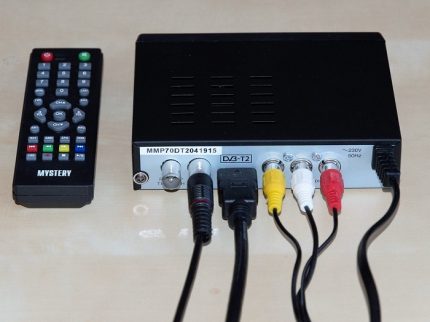
Powerful devices for DVB-T2 not only amplify the signal received by the antenna, but can also perform additional functions: summarize data transfer from 2-3 antennas or, conversely, split one signal into several outputs.
Types of antenna amplifiers
In practice, it is possible to check whether it is worth buying an amplifier in an elementary way: install a TV and a signal receiving antenna nearby. If the image becomes clearer, it makes sense to buy a signal amplifier, if the picture on the screen does not improve, you will first have to replace the antenna itself.
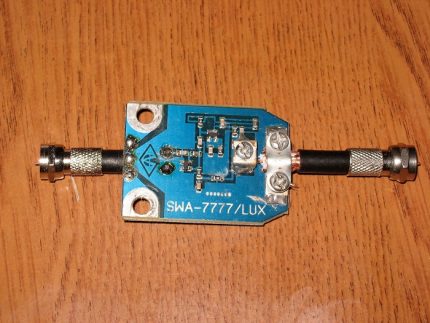
On sale there are 3 categories of amplifiers:
- Range The sample is a DMV device intended for digital data transmission DVB-T2.
- Multiband operating in the decimeter and meter ranges, that is, recognizing all transmitted signals.
- Broadband - LSA and SWA. They amplify the signal transmitted in a given band.
If a store consultant says that you need a device for amplifying a digital signal, then most likely he will offer a choice among special digital amplifiers - devices with boards operating in the UHF (decimeter wavelength range).
Advantages and disadvantages of devices
The selected amplifier can not be good or bad, it is necessary that it fit the technical characteristics.Even an expensive high-quality adapter can both improve the signal and make it unstable.
To avoid this, the design of the home television network should be thought out before installing the main elements - a TV, antennas and amplifying devices.
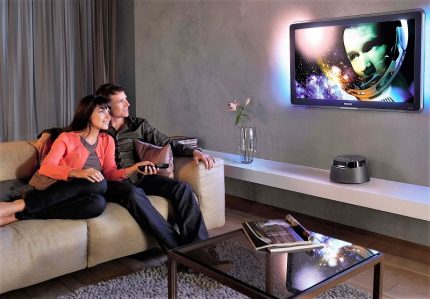
Ideally, when using several television sets, the number of amplifiers should be limited, since any additional device distorts the video stream, and not only improves the signal. The result of distortions can be their layering on each other and a negative result.
An unexpected effect can be obtained if you use a broadband amplifier. Receiving signals of different levels from the repeater, the amplifier increases the frequency, overloads the stream supplied to the connector of the receiver or decoder.
As a result, the signal parameters, and subsequently the image quality, drop sharply. The situation can be saved by the ability to adjust the amplifier, but not over the entire range, but at individual frequencies.
Amplifier Recommendations
Not the fact that the selected amplifier will correct the situation. Some devices have their own noise, while others are sensitive to ambient noise. Due to the installation of such a device, the signal will not improve, but will decay completely.

An amplifier is also not suitable if:
- reception level is exceeded, device parameters cannot cope;
- the signal, on the contrary, is weak and does not improve;
- the antenna, in addition to the main signal, catches interference, which is also amplified.
Chasing the maximum gain is not worth it, as usually all incoming signals are not needed. In order not to guess, it is better to first measure the level of the transmitted signal and determine whether it is direct or reflected.
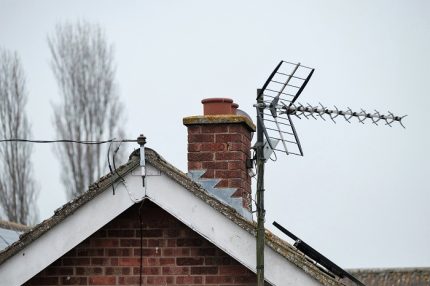
Digital television, as you know, has its own characteristics. If during data transmission strong frequency fluctuations overlap each other, signal amplification will not help. It is better to purchase a passive antenna of directional type. The amplifier will only violate stability and cause malfunctions in the digital decoder.
To amplify the entire TV frequency band, broadband devices are used, but with the possibility of fixed gain.
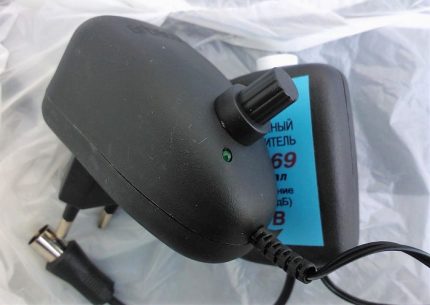
The appearance and dimensions of the amplifiers should not be confusing, since most modern devices are designed to be mounted anywhere on the coaxial cable for the antenna. They are compact, ergonomic, have suitable connectors. There is no need to disassemble or carry the antenna for installation.
But remember: increasing the distance to the antenna leads to the appearance of intrinsic noise, which can interfere with the passage of the signal.
When choosing an amplifier, be sure to consider the following criteria:
- noise figure;
- frequency range;
- gain;
- degree of protection.
An experienced consultant can choose a model if you correctly describe your home network and explain the conditions for installing the antenna. A special table also helps a lot when choosing, where the decisive criterion is the distance from the repeater to the receiver.
When choosing a device by the power method, do not forget that the digital tuner also generates voltage, so you can connect a device with a 5 V microcircuit.
Conclusions and useful video on the topic
Amplifiers for passive antennas:
Digital TV Device Overview:
When choosing a TV antenna amplifier, try to consider all the criteria. The main mistake is to ignore intrinsic noises, which as a result do not improve the signal, but cause its attenuation. High-quality details, a minimally short cable, narrow antenna directivity - this is what you should pay attention to to reduce the noise level.
Please comment in the box below. We are interested in your opinion and stories about personal experience in choosing and connecting a TV signal amplifier. Here you can ask questions if they arose during your familiarization with the information provided.

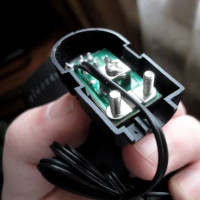 Antenna amplifier for a TV: the principle of operation and the rules for choosing a TV antenna amplifier
Antenna amplifier for a TV: the principle of operation and the rules for choosing a TV antenna amplifier 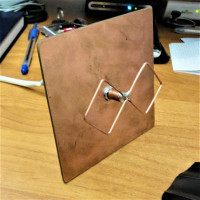 DIY TV antenna: step-by-step instructions for assembling popular TV antenna models
DIY TV antenna: step-by-step instructions for assembling popular TV antenna models 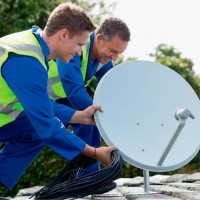 Do-it-yourself installation of a satellite dish: detailed instructions for installing and setting up a satellite dish
Do-it-yourself installation of a satellite dish: detailed instructions for installing and setting up a satellite dish 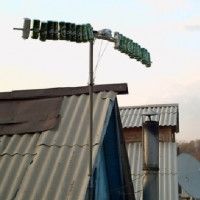 Do-it-yourself antenna for DIY: options and schemes for homemade products + manufacturing instructions
Do-it-yourself antenna for DIY: options and schemes for homemade products + manufacturing instructions 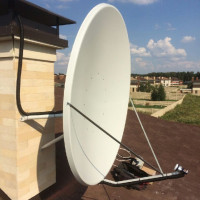 Do-it-yourself satellite dish tuning: do-it-yourself briefing on tuning the dish on the satellite
Do-it-yourself satellite dish tuning: do-it-yourself briefing on tuning the dish on the satellite  How to set up a satellite dish tuner yourself: equipment setup steps
How to set up a satellite dish tuner yourself: equipment setup steps  How much does it cost to connect gas to a private house: the price of organizing gas supply
How much does it cost to connect gas to a private house: the price of organizing gas supply  The best washing machines with dryer: model rating and customer tips
The best washing machines with dryer: model rating and customer tips  What is the color temperature of light and the nuances of choosing the temperature of the lamps to suit your needs
What is the color temperature of light and the nuances of choosing the temperature of the lamps to suit your needs  Replacement of a geyser in an apartment: replacement paperwork + basic norms and requirements
Replacement of a geyser in an apartment: replacement paperwork + basic norms and requirements